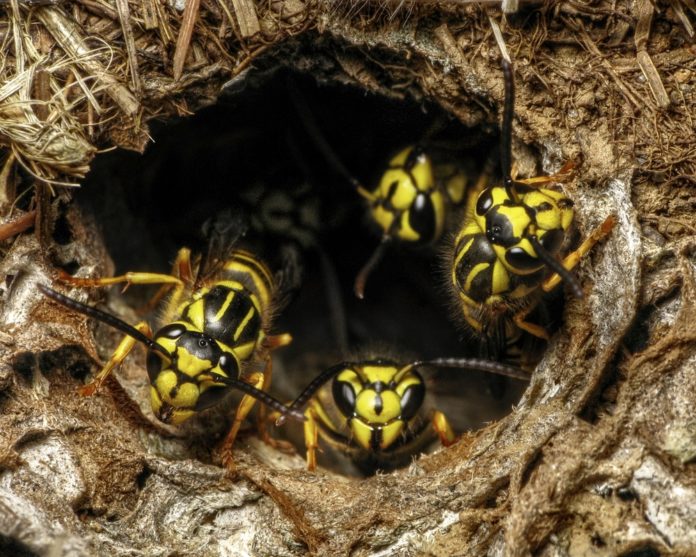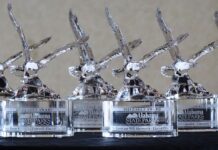AUBURN, Ala. – With fall just around the corner, the time when yellow jackets are at their most aggressive is fast approaching. To make matters worse, Alabama is experiencing unusually high yellow jacket populations this year. It’s important that people be on the lookout for yellow jackets and their nests.
Stinging
Yellow jackets are highly defensive and will attack anything that disturbs their nests.
“Unlike other stinging insects, yellow jackets have the ability to sting repeatedly,” said Xing Ping Hu, an Alabama Extension entomologist. “They do not lose their stringer, so each insect can sting repeatedly, and they generally attack in large numbers.”
When a yellow jacket stings, it tags the victim with an alarm pheromone that may last for hours. This pheromone makes the victim a potential target for other yellow jackets. This is why even a single sting is dangerous. When stung, some people may react differently than others.
“Reactions can be as severe as a life-threatening allergic reaction, where others can be only a sharp pain and burning sensation at the sting sites,” Hu said. “Depending on the severity of the stings and a person’s reaction, some may need to seek medical treatment.”
Be alert
As a rule of thumb, never intentionally disturb a yellow jacket nest. This will only make them more defensive, and you run the risk of being stung. While yellow jackets will build aerial nests that are visible, the real danger lies in those nests hiding underground.
“Be alert to these ground nests when playing in the yard or mowing grass,” she said. “In case you run across a nest, carrying a can of wasp spray with you could help in the event of accidentally disturbing one.”
When mowing or doing yard work, wear protective clothes and shoes, including gloves, a hat and possibly even a face mask or bee veil.
Control
When treating ground nests, locate where the insects fly out and treat the nest early in the morning or after dark.
“Do not try to control the nest during the day,” Hu said. “Do the treatment either early in the morning before they come out or after dark when they go dormant.”
According to Hu, insecticidal dust products (containing carbaryl insecticide) are the preferred treatment formulations. Hand dusters and air dusters are the more common applicators. When using a hand duster, puff the dust inside the opening of the nest and leave the treatment area immediately. Hu added that homeowners can cover the nest opening with a large glass pan/cover to trap the yellow jackets inside the nest until they die.
“Do not return to the area for at least 24 hours,” she said. “You may need to repeat the dusting process about every three days until there are not wasps coming out of it.”
Hu warns that wasp and hornet aerosol sprays have limited or no use on eliminating an entire colony. For large colonies, call a licensed commercial pest control company to take care of the problem.
More information
For more information on yellow jackets and other wasps, check out these Alabama Extension resources or contact your county Extension office.





























